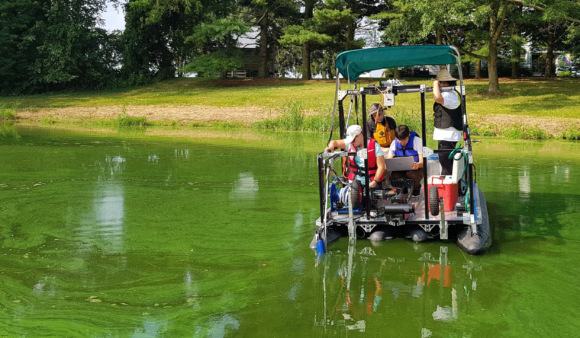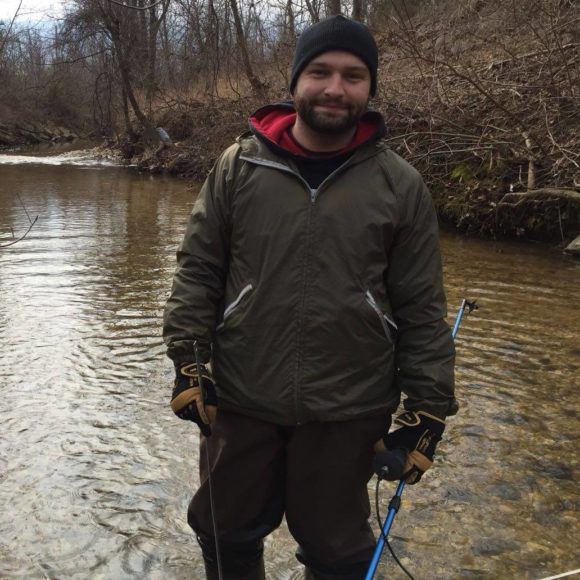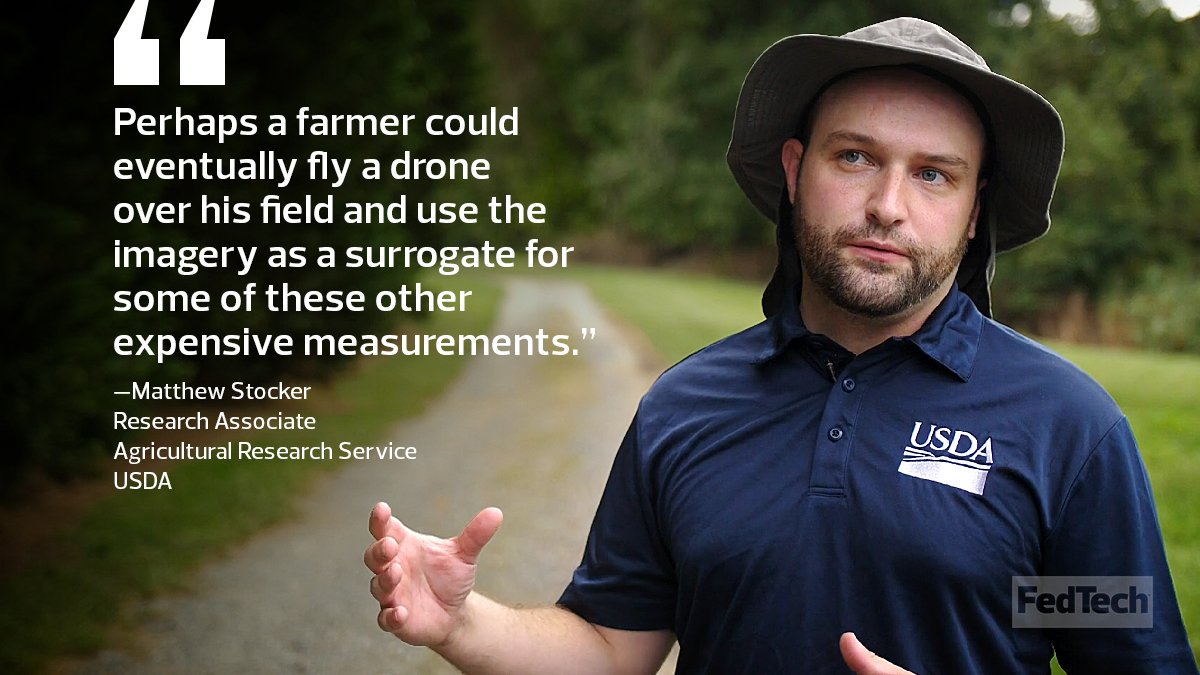From Boats to Drones: Matt Stocker’s (’11) Journey to the USDA
It’s not often that you hear of drones being used to measure water quality.
That’s exactly what former Blue Water Baltimore intern Matt Stocker (’11) is doing.
A Research Associate at the USDA’s Agricultural Research Service (USDA-ARS), Matt Stocker is part of a team of researchers testing drones as tools for water quality monitoring efforts. That’s not all; Stocker is also pursuing a Ph.D. in Soil and Watershed Science at the University of Maryland.
In a recent Q&A, Stocker discusses how interning at Blue Water Baltimore catalyzed his journey to the USDA.
USDA-ARS Monitoring Water Quality Using Drones
Scientists with the U.S. Department of Agriculture’s Agricultural Research Service are using drones to sample irrigation ponds for e-coli. This could give farmers a new tool to avoid spraying potentially harmful bacteria on crops. USDA’s Patrick O’Leary reports from Queenstown, Maryland.
First off, tell us about your current work at the USDA. Working with drones sounds nifty!
MS: It is! So I work as a scientist for the USDA’s Environmental Microbial and Food Safety Laboratory. Our research seeks to better understand how potentially harmful microbes move through farms and into our food so we can learn how to best stop it. Some microbes make their way into our food through the water used to irrigate crops.
I’m part of a team working to test different tools and methods for monitoring and gauging microbes in such waters. One method we’re excited about is the use of drones for sampling irrigation ponds for E. coli. This could give farmers a new tool for avoiding the spread of potentially harmful bacteria on crops.

Why did you join the Blue Water Baltimore team and what skills did you learn as an intern?
MS: In 2011, I was in the final year of my B.S. in Environmental Science and Policy degree at the University of Maryland. At the time, I was searching hard for science jobs and internships. I was completing an internship that – while fun and interesting – wasn’t what I was truly passionate about; I knew I wanted to work on water quality. When I found an internship opportunity at Blue Water Baltimore, I knew I had to apply!
I learned so many amazing skills while working at Blue Water Baltimore. Learning how to test water samples was one of the best skills of them all. My supervisor spent a lot of time teaching me how to use a YSI 556 MPS, which is great hand-held tool for testing all sorts of water quality parameters. While I was confused at my first, I learned how to calibrate, use, and store the device. I use a similar device at the USDA that I know from front to back thanks to my previous experience using a YSI at Blue Water Baltimore.

Tell us about a project you worked on that was your favorite, the most challenging, or the most exciting.
MS: The most exciting part of my internship was the work I did with the Waterkeeper team. The most challenging part was what I saw along the way.
Riding on the Waterkeeper boat was nice, but we we’re not on a leisurely cruise; we constantly collected samples, took and recorded measurements, and moved equipment from site to site. This is where I began to truly see some of the water issues in Baltimore.
On some days – especially after heavy rain – it was clear how bad the water was. The sights and smells were enough to tell when raw sewage was in the water. I was shocked by this and wanted to whatever I could to help combat the issue and let people know the water was not safe.
How did your time at Blue Water Baltimore prepare you for your current role at the USDA?
MS: My time at Blue Water Baltimore showed me that there is so much to think about when it comes to keeping our waterways safe, clean, and usable for generations to come. In addition, I learned more about the practical intersection between science and environmental protection.
Blue Water Baltimore provided practical hands-on experience with water sampling, testing, and data collection processes that I still use now at the USDA.
All in all, what do you enjoy most about working on water quality issues?
MS: I love water, fresh and marine waters alike; I love being in them and I love the creatures that depend on them as habitats, the vegetation that grows in them, their natural beauty. In addition, I want to know that myself, friends, and community can safely enjoy and recreate in waters in our area and beyond.
As a kid, I never gave much thought to where our water comes from and would never think twice about going for a swim. Now, I am always trying to think about the big picture: where did this water come from? What has it seen on its journey? Is it safe? I’m passionate about using my skills towards a future where clean water allows our communities and ecosystem to thrive together.
___________________
Matt Stocker earned a B.S. in Environmental Science and Policy (‘12) and a M.S. in Soil and Watershed Science (‘17) at the University of Maryland. To learn more about the USDA-ARS’ water quality monitoring efforts, visit www.ars.usda.gov.
Featured photo credit: FedTech Magazine (@FedTechMagazine / Twitter)

